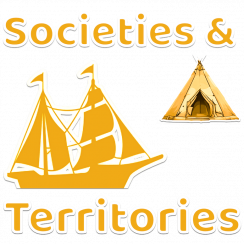When we think of the Prairies, we tend to think of flat landscapes and farming. But there were also growing cities. One city in particular stood out in 1905: Winnipeg. The Canadian Pacific Railway had many facilities there (stations, factories, etc.), which greatly contributed to its development. Almost all the immigrants who settled in the Prairies passed through Winnipeg. The city became a gateway to the Prairies.
Winnipeg is located where the Red and Assiniboine rivers meet in Manitoba. The city was officially recognized in 1873. By 1906, it had a population of 90,153 people (roughly comparable to Québec City at the time). The majority of its inhabitants were English speaking. The city however was bisected by the railway: to the south lived those of British origin, who held better paying jobs and, to the north were immigrants from Europe, who were poorer. Most francophones from Québec lived in the town of St. Boniface, which is located east of the Red River across from Winnipeg (St. Boniface is now a neighbourhood in Winnipeg).
Winnipeg was the metropolis of the Prairies. It was a city of its time with electric streetcars, street poles with telephone and electrical wires, a university, parks, a public library, businesses and industries. Winnipeg also had many of the same problems as other large cities like Montréal. For example, its water and sewer systems were not very efficient. Water and milk often contained bacteria, which caused diseases, especially in children.
Other cities developed in the Prairies around 1905, like Edmonton, Calgary and Regina, but they were smaller.
Did you know?
The name Winnipeg comes from two Cree words that mean “muddy water”.
Author: Service national du Récit de l’univers social





